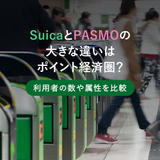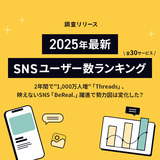What is Valentine's Day to start with? The various types of "chocolates"
Valentine's Day is celebrated every year on February 14.
The modern-day tradition of "giving a gift to your significant other as a way to express your love" is said to have originated with the sales of Valentine's Day cards by a British publishing company. In Japan, around the 1970s, chocolate companies developed a strategy that helped trigger a trend that began to take root, mainly among students in elementary to high school.
While it is common around the world to send Valentine’s gifts to each other regardless of whether they are a man or woman, in Japan, women give Valentine's chocolates to men to express their romantic feelings for them. In recent years, various other trends have emerged, such as the "tomo choco (友チョコ),” or “friend chocolates" given to friends, "gyaku choco (逆チョコ),” meaning “reverse chocolates" that men to give chocolate to women on Valentine's Day, "obligation chocolates" for women to give to the men who they have no romantic feelings for, and "self chocolates" as a gift to oneself. The Valentine' Day culture in Japan is developing in its own unique way.
In this research study, we would like to investigate the market characteristics and changes in user insights regarding the unique Japanese culture surrounding Valentine's Day.
"Self chocolates," "care chocolates," and "my fave chocolates"... New trends emerge
First, let us research the recent Valentine's Day trends in Japan.
■Is "rewarding yourself" a trend? Changes in the Valentine's Day market structure
What are the market trends for Valentine's Day in 2023?
According to a March 2023 report from FNN Prime Online, all four major department stores reported an increase in earnings for the fiscal year ending February 2023. While some of the increase was due to graduation ceremonies and other events, FNN Prime estimates that the gains were particularly due to the Valentine's Day sales. In addition, sales at the 2023 Amour du Chocolat, a chocolate fair operated by JR Nagoya Takashimaya since 2001 which celebrated its 23rd anniversary in 2023, reached a record high in 2023, with 127% more visitors than the previous year.
On the other hand, according to a Valentine's Day study conducted by Nippon Information Incorporated in February 2023, people plan on giving a Valentine's Day gift to an average of 4.8 people and the average budget is JPY 4,244, both lower than the actual figures from last year.
This graph shows the percentage of women who answered that they will prepare (or prepared) "giri choco (義理チョコ),” or “obligation chocolates," in a survey conducted by INTAGE, Inc. in 2022 and 2023.

Based on a survey conducted by INTAGE, Inc. regarding Valentine's Day
*The percentage for 2021 is the percentage of women who responded that they actually prepared "‘obligation chocolates’ the previous year" in a 2022 survey
Survey period:
Data from 2021 and 2022|January 25-27, 2022
Data from 2023|January 20-23, 2023
Subjects:
2022|2,116 men and women ages 16-69
2023|2,633 men and women ages 15-79
※translated by VALUES
As can be read from the graph, the number of women who prepare "obligation chocolates" seems to be declining every year. While there are a number of companies where the culture of handing out "obligation chocolates" in the workplace has taken root, in the same survey conducted in 2023, when asked about their willingness to participate in the culture of giving out "obligation chocolates" at work, 82.8% of all women answered that they did not want to participate.
On the other hand, according to a research study conducted by Ai-Land Co., Ltd. in October 2022, 25% of respondents said they would give chocolate to themselves on Valentine's Day, a 9-point increase from the previous year. In addition, according to a research study conducted by Matsuya Ginza in 2022 regarding Valentine's Day in 2023, the average budget spent on "jibun choco (自分チョコ),” or “self chocolates," is exhibiting an upward trend, up 102% from the previous year.
Based on the above, it is believed that while the custom of giving "obligation chocolates" on Valentine's Day is slowly dying down, the custom of giving "self chocolates," or gifting chocolates to oneself, is becoming increasingly popular.
Also, this may be due to a change in societal views on gender and the fact that the COVID-19 pandemic forced people to stop the custom of handing out "obligation chocolates" at work and school (to avoid spreading infection).
■"Care chocolates" and "my fave chocolates"...New categories of Valentine's chocolates are emerging one after another!
In recent years, "sewa choco (世話チョコ)," or "care chocolates," which can be considered a by-product of "obligation chocolates," has also emerged.
As the name suggests, "care chocolates" refer to chocolates sent as a token of gratitude to those who have, somehow, taken care of one or have done favors.
Here is a graph showing the recipients of chocolate by percentage in a research study conducted by JR Nagoya Takashimaya from December 2022 to January 2023.

Source: https://prtimes.jp/main/html/rd/p/000000184.000047031.html
Survey period: December 20, 2022 - January 6, 2023
Subjects: 2,455 persons
※translated by VALUES
Respondents who answered that they gave chocolates to "those who took care of me" ranked third, accounting for 15% of all respondents, more than the number of people who answered that they gave chocolates to a "friend." The presence of the "obligation chocolates" option in the same survey suggests that "care chocolates" is considered a category separate from "obligation chocolates."
The trend of purchasing chocolates for the purpose of sending them to their "favorite" person they want to support known as "oshi choco (推しチョコ)," or "my fave chocolates," has also emerged, and major confectionery manufacturers, such as Meiji and Mary Chocolate, ran campaigns around the theme of "my fave chocolates" in time for the 2023 Valentine's Day season.

Source: https://www.meiji.co.jp/products/brand/oshichoco/
※translated by VALUES
In a survey on "my fave chocolates" conducted by Meiji in January 2023 targeting Generation Z ages 15 to 26, 27.1% of respondents answered their "my fave" as the person to whom they would send a Valentine's Day gift, an increase of 11.4 points from the previous year. In the same survey, 63% of respondents said they would like to use Valentine's Day as part of their "my fave activities" to support their “favorite” person. This shows the strong affinity between the trending "my fave" activities and Valentine's Day.
Research on the Valentine's Day user demographics
Next, we will investigate what kind of users are interested in Valentine's Day.
The survey will be conducted using Dockpit, an online behavioral analytics tool from VALUES, Inc., that enables users to analyze competitor websites and investigate trends using behavioral data that is updated monthly all within their browser.
First, let's look at the number of users who searched for words containing "Valentine's" from January 2021 to February 2023.

Number of users searching for "Valentine's" (Screenshot from Dockpit)
Period: January 2021 - February 2023
Devices: PC and smartphone
From 2021 to 2023, the number of searches peaks in February each year, but there are fewer searches at the peak in 2023 than those in 2021 and 2022, suggesting that the number of people interested in Valentine's Day is declining each year.
Next, we examine the sex of people searching "Valentine's."

Ratio of the sex of people searching "Valentine's" (Screenshot from Dockpit)
Period: January 2023 - February 2023
Devices: PC and smartphone
With 20% of those searching "Valentine's" being male and 80% being female, it is clear that females are the overwhelming majority. In addition, according to a survey conducted by Cross Marketing in January 2023, 57.5% of women and 22.7% of men answered that they "plan to give a gift to someone" for Valentine's Day in 2023. From these results, it can be inferred that women make up to the core users searching for Valentine’s Day-related information.
And according to a research study conducted by INTAGE, Inc. in January 2023, the following graph shows the types of chocolates that the surveyed women prepare for Valentine's Day, by age group.

Source: https://www.intage.co.jp/news_events/news/2023/20230208.html
Survey period: January 20, 2023 - January 23, 2023
Subjects: 1,325 persons (2,633 persons for the entire survey)
※translated by VALUES
Compared to other age groups, students ages 15 to 19 show a particularly high percentage of "tomo choco (友チョコ)," "friend chocolates," indicating that students give gifts mainly to friends such as those at school. The proportion of "honmei choco (本名チョコ)," or "true feeling chocolates," is relatively high among young people ages 15 to 29, indicating that the traditional Valentine's Day custom of giving a gift to the person one has romantic feelings towards still exists in society today. In addition, a relatively higher percentage of the middle-aged group (ages 30 to 49) sends "kazoku choco (家族チョコ)," meaning "family chocolates," to their own family members than other age groups, indicating that the recipients of Valentine's Day gifts are changing with the respondents' life stages.
And from the those in their 50s and older, the percentage of respondents who do not plan to give a Valentine's Day gift increases in proportion to the increase in age. Overall, it is thought that people in their teens to 40s are the core consumer group for Valentine's Day.
Lastly, we investigate the ranking of words that are often searched in combination with "Valentine's."
The image below lists the ranking of keywords searched in combination with "Valentine's” from January 2022 to February 2023.

Ranking of "Valentine's" combination keywords (Screenshot from Dockpit)
Period: January 2022 - February 2023
Devices: PC and smartphone
The words shown indicated in the green boxes, such as "homemade" and "recipe," are assumed to be searched by people who make their own sweets for Valentine's Day. Handmade Valentine’s chocolate is valued and normalized in Japan as it has been thought to demonstrate and prove true affection. Looking at the trend in the number of searches, we can see that the number of searches in 2023 is on a downward trend compared to 2022. This suggests that the custom of handmade sweets for Valentine's Day is declining.
In addition, the words shown in the blue boxes are "present" and "message," which are presumed to be searched by people who plan to give someone a gift for Valentine's Day. As with the keywords boxed in green, we can see that the number of people searching for these words in 2023 is on a downward trend compared to 2022. As we mentioned at the beginning of this report, "obligation chocolates" is on the decline, but the custom of giving a gift to someone on Valentine's Day itself, not limited to "obligation chocolates," may be beginning to wane.
On the other hand, the words shown in the yellow boxes are words such as "Starbucks" and "event" that are thought to have been searched for by people interested in events held during Valentine's Day.
Starbucks, which was specifically named, offers new products for Valentine's Day every year, and it is likely that this garnered attention, resulting in related many searches. In addition, "event" searches are thought to have been conducted by people seeking information on various events held during Valentine's Day, including the "Amour du Chocolat" fair held by JR Nagoya Takashimaya, which was introduced at the beginning of this report. These keywords, in contrast to those introduced earlier, have increased in the number of searches in 2023 compared to 2022.
Also, here is a ranking of keywords searched in combination with "chocolate" from January 2022 to February 2023.

Ranking of "chocolate" combination keywords (Screenshot from Dockpit)
Period: January 2022 - February 2023
Devices: PC and smartphone
Compared to 2022, we can see that the words "Valentine’s" and "recipe" indicated in the blue boxes are on a downward trend in 2023. In addition, the top 15 words in the combination keywords are "Lindt," "ROYCE'," "GODIVA," and "Morozoff," and the number of people searching for ROYCE' is particularly increasing compared to 2022.
The graph below shows the percentage of the various ages of people who searched for the four aforementioned brands.

Percentage of people searching "Lindt," "ROYCE'," "GODIVA," and "Morozoff" by age group (Screenshot from Dockpit)
Period: February 2023
Devices: PC and smartphone
Overall, people are mostly in their 20s and 40s, with Lindt (blue) and GODIVA (green) attracting the most attention from younger consumers in their 20s and 30s, while ROYCE' (pink) and Morozoff (yellow) have the highest percentage of consumers in their 40s.
In light of the above, while the custom of sending gifts to someone on Valentine's Day, including "obligation chocolates," is declining overall, events held during the Valentine's Day period is attracting an increasing amount of attention, suggesting that the trend of buying chocolates as a reward for oneself is gaining momentum.
Summary
In this study, we investigated the trends and characteristics of Valentine's Day consumers in Japan, which has its own unique customs compared to other countries around the world.
The study highlights the following unique findings:
・The number of people searching for "Valentine's" and the average number of people giving gifts and their budgets are on a downward trend. Is the use of Valentine's Day to gift "to others," including giving "obligation chocolates," declining?
・On the other hand, the budget for "self chocolates," the purchase of chocolates as a reward for oneself, is on the rise.
・The majority of respondents were women in their teens to 40s, but there were some differences in the "type of chocolates" (i.e. who they give them to) depending on the age group.
・The new trends of "my fave chocolates" and "care chocolates" have emerged. The uniqueness of Valentine's Day culture in Japan seems to be further strengthening.
In Japan, in addition to the original custom of giving a gift to a significant other or love interest, various types Valentine's Day trends and chocolates have emerged. It is likely that Valentine's Day will continue to transform and evolve in the future, with influence from social values and other factors.
About Dockpit
▼Data from Dockpit was used in this case study. Dockpit is an online behavior analytics tool provided by VALUES, Inc., and it allows you to access online behavioral data (updated monthly) via your browser so you can research competitor websites and investigate trends. There is a FREE version of Dockpit, so if you are interested in using it, please register below.
Reference materials
・Valentine's Day sales were strong in February, with a 30% increase in department store sales
(https://www.fnn.jp/articles/-/493629)
・The truth behind the "100 million yen a day" chocolate sales event in Nagoya
(https://toyokeizai.net/articles/-/326991)
・2023 Valentine's Day in 2023 - What women really think about Valentine's Day in 2023 - |Survey research, marketing research, Nippon Information Incorporated
(https://www.n-info.co.jp/report/0043)
・Valentine's Day is changing. Gifts for the "family" and "myself" (https://www.intage.co.jp/news_events/news/2022/20220204.html)
・Modern-day Valentine's Day|INTAGE, the leading market research firm in Japan
(https://www.intage.co.jp/news_events/news/2023/20230208.html)
・[Research report] OTORIYOSE net, Valentine's Day 2023 survey: 66% plan to purchase Valentine's Day items via online, 9 points more plan to buy for themselves Chocolates ranking also revealed | Ai-Land Co., Ltd.
(https://www.ai-land.co.jp/press/p-otoriyosenet/14825/)
・The market for "treating yourself" on Valentine's Day is expanding...This year, there will be more eat-in stores, and a popular bar in Ginza will also open a store
(https://www.yomiuri.co.jp/economy/20230121-OYT1T50084/)
・[Nagoya Takashimaya】2023 Valentine's Day awareness survey: Many respondents purchase a total of "10 or more" chocolates, continuing the trend toward the luxury purchase of "self chocolates"
(https://prtimes.jp/main/html/rd/p/000000184.000047031.html)
・Valentine's Day is not about "true love" this year, but about "my fave"! "Recipients" and "ways of enjoying" are also diversifying, such as "posting on social media with your "my fave"!
(https://prtimes.jp/main/html/rd/p/000000027.000025200.html)
・[Notice] Survey research on Valentine's Day (2023) - Cross Marketing, your source for research and market research
(https://www.cross-m.co.jp/news/release/20230201/)
※日本語での記事はこちらをご確認ください

「自分チョコ」や「推しチョコ」がトレンド? 日本の2023年バレンタイン商戦を調査
https://manamina.valuesccg.com/articles/23062月14日はバレンタインです。日本では、女性が男性へチョコを送ることが一般的な慣習でしたが、近年は「友チョコ」や「自分チョコ」など、様々なジャンルのバレンタインチョコが登場しています。今回は、そんな特色ある日本国内のバレンタイン事情や、ユーザーの興味の変化を調査してみました。ユーザーのバレンタインに対する価値観にも、変化が訪れているようです。























マナミナは" まなべるみんなのデータマーケティング・マガジン "。
市場の動向や消費者の気持ちをデータを調査して伝えます。
編集部は、メディア出身者やデータ分析プロジェクト経験者、マーケティングコンサルタント、広告代理店出身者まで、様々なバックグラウンドのメンバーが集まりました。イメージは「仲の良いパートナー会社の人」。難しいことも簡単に、「みんながまなべる」メディアをめざして、日々情報を発信しています。